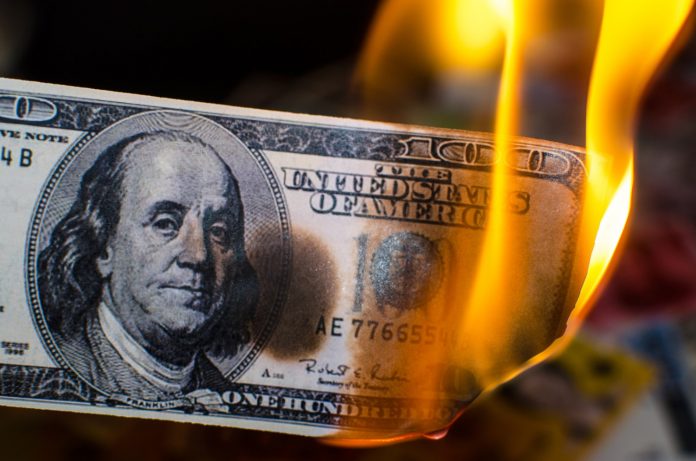Stocks slipped today following the unveiling of a wholesale inflation rate that exceeded expectations. This key economic indicator arrives just before the Federal Reserve’s crucial policy meeting next week.
The S&P 500 dropped by 0.4%, and the Dow Jones Industrial Average saw a similar decline of 0.4%. The Nasdaq Composite experienced a slightly larger fall, losing 0.5%. Notably, tech giants Nvidia and Tesla both saw their shares dip by more than 4%, extending their losses from yesterday.
Following unexpectedly high consumer price data, the February Producer Price Index (PPI) was anticipated to show a slowdown from January’s spike. However, the reality was quite the contrary. The headline Final Demand PPI increased by 0.6% month-over-month, which is twice the 0.3% rise that had been forecasted, marking the most significant increase since June 2022. Consequently, the year-over-year PPI escalated to +1.6%, reaching its peak since September.
This marks the second consecutive month where PPI has substantially outperformed expectations, with energy costs leading the way. A notable 70% of the increase in February’s Goods PPI is attributed to the energy index, which soared by 4.4%, driven significantly by a 6.8% hike in gasoline prices.
Breaking down the PPI further, final demand goods prices surged by 1.2% in February, marking the largest rise since a 1.7% increase in August 2023. A significant portion of this broad-based rise is due to the final demand energy index’s 4.4% jump.
Excluding food and energy, final demand goods and final demand foods also saw increases, moving up by 0.3% and 1.0%, respectively.
In detail, a third of the February advance in the final demand goods index was due to gasoline prices’ 6.8% rise. Diesel fuel, chicken eggs, jet fuel, beef and veal, and tobacco products also experienced price increases. On the flip side, prices for hay, hayseeds, and oilseeds fell by 8.3%, with declines also in iron and steel scrap and asphalt.
For final demand services, prices rose by 0.3% in February after a 0.5% increase in January. The hike was led by final demand services less trade, transportation, and warehousing, which advanced by 0.5%. Transportation and warehousing services prices rose by 0.9%, while margins for final demand trade services decreased by 0.3%.
A 3.8% increase in traveler accommodation services prices significantly contributed to the rise in the final demand services index. There were also upticks in outpatient care, airline passenger services, loan services, securities brokerage, and alcohol retailing. However, margins for chemicals and allied products wholesaling saw a 6.4% drop.
This latest report poses a challenge for those hoping for disinflation. It also complicates President Biden’s narrative that ‘prices are coming down’ and may shift his focus back onto blaming “corporate greed” – something he did in a recent criticism of supposedly shrunken candy bars, an allegation that the Mars corporation vehemently denies.
But inflation is turning into the unwelcome guest at the market’s dinner party, showing no signs of leaving anytime soon. Despite the market’s optimism for a mild inflation scenario, the reality is that price growth is getting more entrenched. With today’s data suggesting a bout of reinflation, the market’s strategy seems to be one of avoidance, hoping inflation will somehow dissipate on its own.
Interestingly, despite the initial reluctance to adjust yields upwards and the stock market’s apparent resilience, the persistence of price growth is likely to become a thorn in the side for investors, with asset prices not fully accounting for such a scenario.
Digging deeper, the US Consumer Price Index (CPI) is showing signs of becoming embedded. A look at the structural versus cyclical components of CPI reveals that while the recent dip in headline CPI can be attributed to cyclical elements, the decline in structural CPI has hit a plateau at a notably high level.
Although cyclical CPI could continue to decrease, historical patterns suggest it’s already quite low, and its downward trajectory seems to be losing momentum. The concern now is that cyclical CPI might begin to rise again, bolstering the already high structural CPI and driving headline inflation up once more.
Several indicators hint at cyclical inflation pressures mounting again. Factors such as increasing profit margins, supply constraints, and the beginnings of an economic recovery in China are all moving in a direction that could fuel inflation.
Further evidence, like banks easing credit standards more quickly than anticipated after the collapse of SVB, suggests a potential uptick in CPI.
Yet, the market has been able to sidestep these emerging inflation risks thanks to favorable liquidity conditions. Despite the Federal Reserve’s quantitative tightening and balance sheet reduction, the system’s reserves have continued to increase, providing a cushion for risk assets.
However, this calm may face challenges soon. The reverse repo facility (RRP) is on a downtrend, and with tax season approaching, an increase in tax receipts is expected to bolster the Treasury’s account at the Fed (the TGA), subsequently reducing reserves. Additionally, there’s a likelihood that the Treasury will decelerate its T-bill issuance.
Given these developments, the market’s ability to dismiss inflationary pressures might become increasingly difficult. The illusion that inflation will simply go away is facing a reality check, suggesting that the runaway bull case could become far less realistic in the months ahead.








